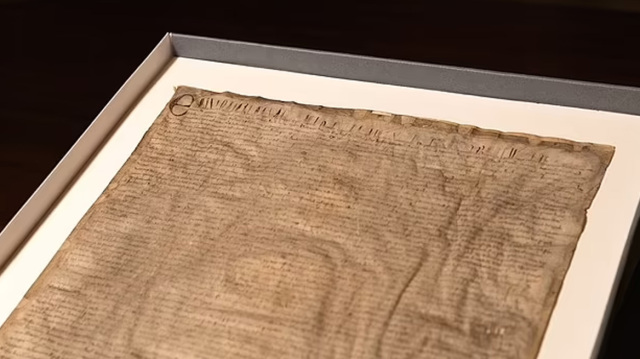The significance of a signature paired with a few strokes of ink can surpass even the wildest imagination. Recently, Harvard has uncovered a priceless artifact in its archives.
A manuscript, believed for many years to be just a “copy” of the “Magna Carta” (formally known as the Magna Carta Libertorum or the Great Charter of Liberties), has been confirmed as genuine. This document, dating back to around 1300, is valued at over $21 million.
In 1946, nearly 650 years later, Harvard University acquired this document at an auction for under $30, unaware of its true historical value, as reported by the Daily Mail.
How did this document end up at Harvard?
Professor David Carpenter, a medieval history expert from King’s College London, began investigating unofficial copies of the Magna Carta and stumbled upon a digitized version on the Harvard Law School Library website.
Noticing something distinctive about this edition, he reached out to Professor Nicholas Vincent, a medievalist from the University of East Anglia. Together, they compared its structure, size, and handwriting with the other six known original copies to verify its authenticity.
The dimensions of the manuscript (48.7 x 47.2 cm) align perfectly with those of other authentic “Magna Carta” documents from the 1300s. Furthermore, the handwriting—particularly the initial “E” in “Edwardus” and the elongated letters—resembles that of contemporaneous original documents.
Using ultraviolet light and spectral imaging, experts confirmed the text’s near-identicality to the originals, establishing that Harvard possesses a genuine historical treasure rather than a mere replica.
The manuscript is believed to have belonged to Rear Admiral Forster “Sammy” Maynard, who inherited it from the Clarkson family, well-known British anti-slavery advocates, and consigned it for auction in 1945.
The significance of the “Magna Carta” as the original “document of liberties”
The Magna Carta was initially drafted in 1215 by the Archbishop of Canterbury on behalf of King John, aiming to resolve conflicts with rebellious barons. It is credited with laying the groundwork for numerous constitutions globally.
Although the first edition was annulled, King Edward I reissued it in 1300, pledging to safeguard church rights, limit taxation, and ensure access to impartial justice.
The “Magna Carta” is regarded as a cornerstone of modern democracy, constitutional law, human rights, and the rule of law in Britain, enshrining principles such as the right to a fair trial and limiting the power of rulers.
Today, four of its clauses remain active in British law.
According to Professor Carpenter: “Harvard’s Magna Carta is not merely an old, worn piece of paper.
This charter is a legitimate record of past freedoms, present rights, and ongoing struggles yet to come.”
Currently, only six original copies of this landmark document are estimated to exist. A similar original “Magna Carta” was auctioned in 2007 for 19 million euros.
The lost “Magna Carta” from Appleby;
Investigators believe this document might be the long-lost “Magna Carta” that was sent to Appleby, a former parliamentary constituency in Westmorland. If confirmed, this would mark one of the most significant archival discoveries of the 21st century.
Ask me anything
Explore related questions

















